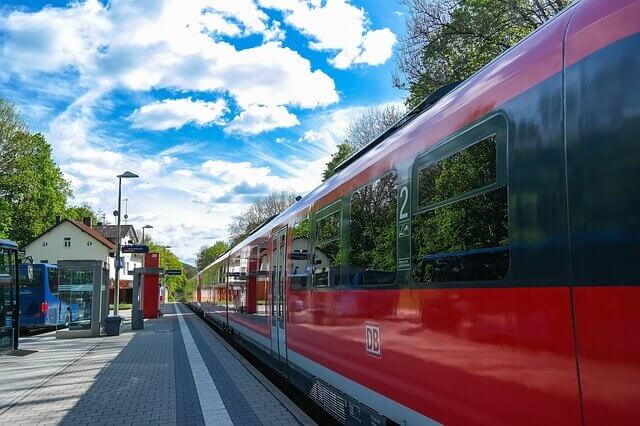Types of Railway Platform
The platform is a raised level surface of a railway station, from where either passengers can get into the train, or the loading and unloading of goods are done. Generally, the following two types of railway platform are provided:
- Passenger Platform
- Goods Platform

1. Passenger Platform
As the name suggests, this type of platform is constructed for the movement of passengers who are using the railway. The following are the essentials of a passengers platform:
i. The passengers’ platform should be covered for a minimum distance of 60 to 61 m of their length.
ii. These types of railway platforms should be paved with a minimum width of 3.65 m.
iii. A ramp should be provided at the end of the platform of maximum slope 1: 6.
iv. Sufficient arrangement of light should be made for the efficient and safe running of trains at night.
v. The drinking water facility should be provided on the passenger platform, and also necessary sanitary arrangements should be made.
vi. The names of stations should be written on a R.C.C. or stone board in bold letters in Hindi, English, and the regional language. The station’s name is written on both sides of the board.
vii. The station’s name should be written on a yellow background in black letter with a size of 300 mm. The spacing between the letters, and also at the top and the bottom letter is 150 mm.
viii. The name board should be kept at least a height of 1.8 m from the platform level.
Dimensions of the passenger platform
a. Length and Width of the passenger platform
- The minimum length recommended for passenger platform in case of all gauges is 180 m. But the desirable length for B.G is 305 m.
- The minimum permissible width in front of a station building for all gauge is 3.60 m.
b. Clearance between the center line of the adjacent track and the edge of the platform
- In India, the clearance is kept 1676 mm for Broad Gauge.
- 1346 mm for Meter Gauge.
- And 1219 mm for narrow gauge.
c. Height or elevation of the passenger platform
Generally, in India, there are three types of platform elevation, namely, the rail level, the low level and high-level platform. The height above rail level for different gauges and platform are as follows:
| S.No | Types of Platform | Height | ||
| B.G | M.G | N.G | ||
| 1. | Rail level | 0.00 m | 0.00 m | 0.00 m |
| 2. | Low level platform | 0.45 m | not applicable | not applicable |
| 3. | High level platform | 0.76 to 0.84 m | 0.31 to 0.41 m | 0.23 to 0.41 m |
d. Slope of Platform
The platforms are provided with a slope of 1 in 30 across its width.
2. Goods Platform
As the name suggests, these types of railway platforms are used for the loading and unloading of goods. The following are the essentials of a goods platform.
i. Generally goods platforms are higher and the minimum width is 3 m.
ii. The goods sheds should be provided on the goods platforms and at the same time an arrangements for weighing the goods should be provided on these platforms.
iii. Proper drainage facility is very essential for a goods platform, hence proper arrangements for drainage should be made on these platforms.
The Permissible height of the goods platforms above the rail level is as follows:
| S.No | Types of Platform | Height | ||
| B.G | M.G | N.G | ||
| 1. | Goods Platform in Level with Wagon Floors | 1.07 m | 0.69 m | 0.61 m |
Read Also: